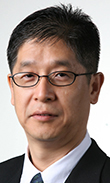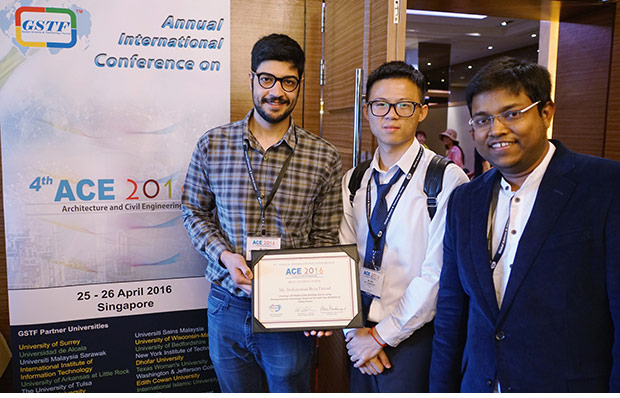Grad CoSci student investigating method for improved 3-D models

Julian Kang
A graduate Texas A&M construction science student introduced a better technique for creating 3-D models of building interiors using a process known as [photogrammetry] (http://www.photogrammetry.com) , which employs software to render models from photographs.
Widely used in the construction industry to measure job site progress and create exterior building models, photogrammetry has had less success rendering interior models, due in part to the camera technique employed, suggested Mohammad Reza Farzad in a paper that earned top honors at the Annual International Conference in Architecture and Civil Engineering.
In the project, Farzad, working with Menghong Wang, a Master of Civil Engineering student, investigated two photogrammetry techniques to produce models of the first floor lobby of Francis Hall, the home of Texas A&M’s [Department of Construction Science] (http://cosc.arch.tamu.edu) .
“Studies show that a standard photogrammetry algorithm works well for creating a 3-D model of a building’s exterior, because the algorithm was developed based on practitioners’ taking pictures from various angles toward the center of a building,” said the students in a paper describing their project.
However, they continued, the algorithm might not work as well for creating a 3-D model of a building’s interior, because photos of interiors are usually made from the center of the space looking outward.
They found that reversing this technique — photographing from the outer parts of the lobby inward — resulted in more accurate 3-D models.
Farzad and Wang, guided by Julian Kang, associate professor of construction science, plan to continue their project by determining a way to create better 3-D models from photographs shot from the center of an interior space, “which better reflects people’s tendency to shoot from the center of an interior,” they said in their paper.
The students’ work earned Best Student Paper Award at the annual [Conference on Architecture and Civil Engineering] (http://www.ace-conference.org/call-for-papers/en/cfp.html) April 25-26 in Singapore. Their paper was selected for its originality, significance, clarity, relevance and accuracy by a jury of design and engineering educators.
Two additional Master of Construction Science students, Cai Yunkun and Sachin Singh, presented papers at the conference.
In his project, Yunkun tested of a building information model’s ability to accurately render a building’s indoor environmental conditions.
Singh researched a platform that promises to solve interoperability issues of different building information modeling applications.
Tags
Related Posts

CoSci prof studies method to reduce presenter anxiety

Research, creative work presented at annual symposium

Faculty envision 3-D printing’s future, earn ‘Vision Award’

Student's algorithms expedite virtual fire scenario simulations
Follow Us
Facebook Twitter Vimeo Youtube Flickr RSS
Recent Posts

Planning prof heads study of disaster housing aid

A message from the dean

Former student remembered as expert planner

Leading educator named new head of Architecture Dept.





_thumbnail_small.png)
